Developer: SEMISOFT | Publisher: Another Indie || Overall: 8.5/10
If you’ve never thought a developer, naming itself a dick joke, could make a faithful, competent, and actually fun “JRPG” then I’ve got a surprise for you. And it’s in my pants. Legrand Legacy: Tale of the Fatebounds coins itself as a “love letter” to JRPGs with a “fresh take” on turn-based combat. In practice, it’s like jerking off JRPGs of the early PS1 and early PS2 eras and blowing their collective loads all over your PC’s hard drive.
During high school I became quite a big JRPG player and it has persisted until now. Final Fantasy, Breath of Fire, Xenosaga, Persona, Legend of Dragoon, Chrono Trigger/Cross, Enchanted Arms, Star Ocean, Unlimited SaGa, Lufia, the list goes on. I’ve kept up with my personal interest of JRPGs, exploring the Wild Arms series more recently, but its been a good four years now since I’ve really stuck with one through the end.
Legrand Legacy: Tale of the Fatebounds takes you back to specific time periods of console JRPG gaming. Think of all of the titles that are released just as a new console comes out, with developers trying to get their first JRPGs out quickly; they are less about doing something new and exciting, but more about the basics of the genre and telling a fun story. Legrand Legacy hammers this feeling right on the head, and while it’s admittedly a better-looking game than you might be used to from those time periods, there are so many callbacks baked-in from past titles. So much so, that you just get a nostalgia overload for gaming mechanics being combined in one place and seeing it all just work out becomes a fun exercise in pointing out what came from where. Practically every gaming mechanic can be referred back to another game, and while there are some modern sensibilities, such as a quest log for sidequests, nothing particularly “degrades” from making you feel like you’re playing a JRPG from the era it hearkens back to. And, of course, the characters are also of very attractive design. They really thought of everything! Just don’t hump the mattress too hard, friends.
The biggest accomplishment for Legrand Legacy is that it is actually enjoyable, despite not really solving any of the problems JRPGs from that time period have in today’s gaming environment. Combat is the biggest gameplay aspect; the battles are a bit slow, but you’re not “waiting” as much as you might be used to in this genre. Turns are more phase-oriented, but a turn-order is not completely ignored. The biggest efficiency increase is allowing for all melee attacks to execute at the same time, with spells “channeling” and being cast after melee attacks. Most spells are channeled, while some will cast before melee attacks. Melee attacks are also allowed to interrupt enemy spells, but you’ll have to use the Formation mechanic to prevent that from happening to your characters too. Your “front row” is best served for melee characters, while the “back row” is typically better for casters/ranged. Although enemy spells can still interrupt your back row, you are more reliably able to cast spells there. There is also a slight stat re-balancing from placing a character in a certain row, reflected in having less attack but more defense in the back row, and the opposite in the front row.
You are allowed three active characters during battle, but are able to switch them out like in Final Fantasy X. I’ve always sung the high praises of FFX being the best traditional turn-based system since it opens the ability to use all of your characters during a fight rather than only being able to switch out of battle. It always annoyed me when I’d have so many characters but didn’t have any reason to use them. Though, in Legrand Legacy, when switching characters from the “Reserve” they are able to act in the same turn as well, but may need to move from the front/back row to properly work for your strategy, which does cost a turn.
The major aspect of defeating enemies is the Persona-like elemental weakness/strength attribute system where using particular attacks/spells deal more or less damage. Although not as intuitive/fast-paced as Persona is, Legrand Legacy‘s spell-casting system, known as “Grimoire,” is akin to Chrono Cross with no mana cost and assigning the skills to particular slots. You can use your Grimoire skills as often as you like, with no cooldown or mana cost, and their effectiveness mostly relies on the enemy’s weakness/strengths. Similarly, items are assigned to slots and you’re not able to use your whole item list, forcing you to strategize about the item spread. Grimoire heals are not particularly overpowered, actually healing less than items, so the decision between attacking and healing, and how to heal is a thing. This isn’t typically a dynamic that is present in JRPGs, at least in my experience, since it tends to be an out-of-battle-only mana-management exercise. In Legrand Legacy, however, the only way to heal out of battle is by using items, which are all percentage-based, giving them longevity in their usefulness. Learning of new Grimoire spells is reliant on the way you build your characters with stats as they level; while they basically force you to go in a particular direction, how you get there is up to you. Character builds are intentionally not diverse as a result, but having control over the path allows you to aim for particular spells before others. I have yet to see a dick-themed spell, but anything is possible late-game.
The combat interface is reminiscent of Xenosaga in a sense, while being as functional as a typical Final Fantasy game. Unfortunately, that means you menu hunt a bit more than you feel like you should, and it would have been nice to add “shortcuts” to your favorite spells on the main interface layout rather than having to go two levels to repeat the same skill over and over. Also, for some god-awful reason, they decided to allow for the directional buttons to confirm your choice of spells after highlighting them, which I constantly accidentally hit since the Xbox360 controller’s D-pad is ass. This made me find out there is no way to customize any controller inputs and stop that from happening.
Most actions require the same QTE game to be played for each character, a call-back to Legend of Dragoon and Final Fantasy VIII to a certain extent. There is a circular wheel with a quadrant highlighted; if your dial is timed to land inside of the highlighted quadrant then you are good, but getting it in a small sliver allows for a “Perfect” execution of the skill, allowing for bonus damage or a lesser chance of being interrupted if it is a spell. While it is simple, quick, and not particularly annoying to execute, it does demand that you are actively paying attention during an entire fight. If you don’t play the QTE game or fail it, your characters will all miss. One of the niceties of this genre was being able to plug in all of your commands then walk away for a couple seconds and do something, but in this case it’s not something that happens. Related to your normal attacks, your characters will slowly build up an AP gauge which allows for a special attack that deals devastating damage. The gauge will only fill up based on offensive attacks, so if your healer is just healing all of the time, she won’t gain anything. The numbers that fly around for damage are also a bit confusing because there are a variety of colors that can appear, and since many attacks go off at the same time, you don’t know which numbers belong to who. Considering the weakness system is important to master, this lack of information doesn’t make it easy.
The AP gauge is important to fill up before hitting up a boss, which can be accomplished while you are in the middle of a grind. Yes, unfortunately, you will have to grind for just about an hour in each dungeon before fighting the end boss, and that’s after figuring out the puzzles. There is also a bonus boss in each zone, which is usually about equivalent in difficulty to the story boss, but for the sake of convenience you should defeat it first since you may instantly leave a dungeon in the course of the story. There aren’t any random fights, but it’ll be a challenge running away from the black eyeballs that represent enemy encounters in the dungeon. They respawn very quickly while you’re in the same zone, so it hardly seems relevant that the fights aren’t random. It’s also very hard or impossible to avoid them all, so the point of having generic black shadow eyeball enemies on the map seems a bit redundant. There are also extra sidequests, maybe one or two per town, that will grant you XP after finishing a task, so it can help with bypassing the grind. I’m not particularly against grinding since you really get into the intricacies of the battle system, so the “about an hour per dungeon” seems just enough to get acquainted with the area and master challenges the enemies present before moving on. Plus, the bosses will cut your dick off and you’ll get a game over if you don’t grind, so there’s that.
The inventory system takes on a Star Ocean-type crafting system, but for weapons and items rather than cooking. You’ll collect all sorts of loot from enemies, who never drop actual money, but only items you can sell. This loot can then be used to craft healing items, offensive items, and weapons. Encumbrance is an actual thing in this game, so you won’t be able to run around and grind infinitely — you’ll have to visit a town and store away all of your unused items at a vendor. Unfortunately, the game does not allow you to access your storage for crafting purposes and you have to have it in your actual inventory to use for crafting. You’re still able to walk really slow while encumbered, so instead of picking and choosing, it’ll be less effort to just take everything out, craft your shit, then throw everything back in. The same goes for weapons/gear/dildos — you’ll only be crafting these items and nothing will drop in the field.
While the cutscenes look like shit, the in-game art-style is actually quite faithful to late PS2 visuals, most notably Final Fantasy XII. However, they go for a “pre-rendered background” look like you would have seen in, say, Final Fantasy VIII. Instead of CG, they exclusively use painted backgrounds with some in-game art/elements overlayed on top. The painted backgrounds all look very nice, but depending on the perspective it looks way too obvious that the main character, Finn, isn’t actually “touching” the ground; the shadows the character gives are also a dead giveaway on the dungeon/world maps. The purpose of pre-rendered backgrounds were to supplement the art to make it not look as crappy all of the time, but they seem to have gone too far in that direction and replaced many things you would typically see “in-game” with the paintings. This is so they didn’t have to spend time modeling things like furniture or barrels. There is some exploring of towns, but they are segmented into selectable areas, reminiscent of Unlimited SaGa, though I’m sure there might be a more comprehensive analogy to make here. The areas are physically explored in similar fashion to Final Fantasy VIII, with a static camera. Music and sound effects are also quite faithful to the genre, with the music being a highlight, in terms of variety, as each zone has its own song. You’ll also hear voices of the characters during battle.
The main character of the story, Finn, looks like Ryu from Breath of Fire, with blue hair, a “secret past,” and “loss of memory” to boot. And probably the same 10 inch dick!!!! DAMN!!! However, I was surprised he wasn’t a silent protagonist. Unfortunately, he breaks his character too often to be believed as a memory-less blank slate like they initially pitch him to be, and I wish that they went the silent protagonist route instead. The script dialogue tends to overstay its welcome a lot more often than I’d like — typically I get the point within two or three dialogue boxes, but then they continue the conversation on the same point for another five, or ten dialogue boxes. Perhaps it has something to do with the English translation as the game is being developed in Indonesia? I can’t tell. There are no voice overs either, which may or may not be good, considering they could have been forced to cut back on the dialogue if they had to actually go through and record all of the extraneous dialogue that seems to happen more often than I’d like. Most of the other characters are designed to look like anime characters and have “live 2D” reaction pop-ups to signify who is talking.
The story itself feels more like a western fantasy “prophecy” story, with some southeastern Asian designs to enemies, which isn’t completely unheard of in the JRPG genre, but it is a bit of a diversion from what I expected it to be originally. Generally, the idea is that the female character Aria is some sort of chosen one and has to assemble a group of random people to become the “Fatebound” and stop a Hell-like dimension full of evil Fur Bolgs from invading their world and to stop all wars. Perhaps this is reminiscent of the first Wild Arms‘ story, but I’m unsure at this point. Finn, the “player character” is essentially relegated to side-character in the beginning of the story rather than being the main influential character which is perhaps reminiscent of FFX where Tidus is just “along for the ride” but ends up taking a very important role later. At about 15 hours in, the dynamic is still unchanged, but the story hasn’t delved into Finn’s forgotten past, so it could go any direction at this point. I suppose as an Easter Egg of sorts, the lead game designer inserted himself as a traveling information guide, telling you about the city you’re in and introducing more lore outside of the confines of the story itself. I’m not entirely sure if this is vain or not, but I suppose it may as well happen. He keeps giving Finn some nuts, and I’m pretty sure it’s another cleverly disguised dick joke. Randomly popping up are plenty of what I assume are Kickstarter name lists/wanted posters/character names or whatever, cause they look like internet names that don’t fit in the universe.
Legrand Legacy: Tale of the Fatebounds is squarely aimed at millennials who grew up on these sorts of games and are willing to dive back into it for one last romp before they go impotent. I’ve definitely written way more than I ever thought I would for this game, and considering it’s something I actually want to finish, I’ll be putting a lot more time into it. There will perhaps be a postmortem on the story at a later point if it ends up being something worth talking about.



















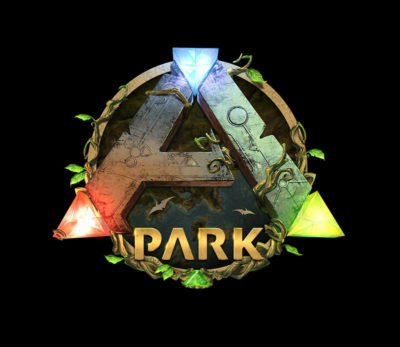








 Developer/Publisher: Codex Worlds || Outlook: “NOT FUNCTIONAL”
Developer/Publisher: Codex Worlds || Outlook: “NOT FUNCTIONAL”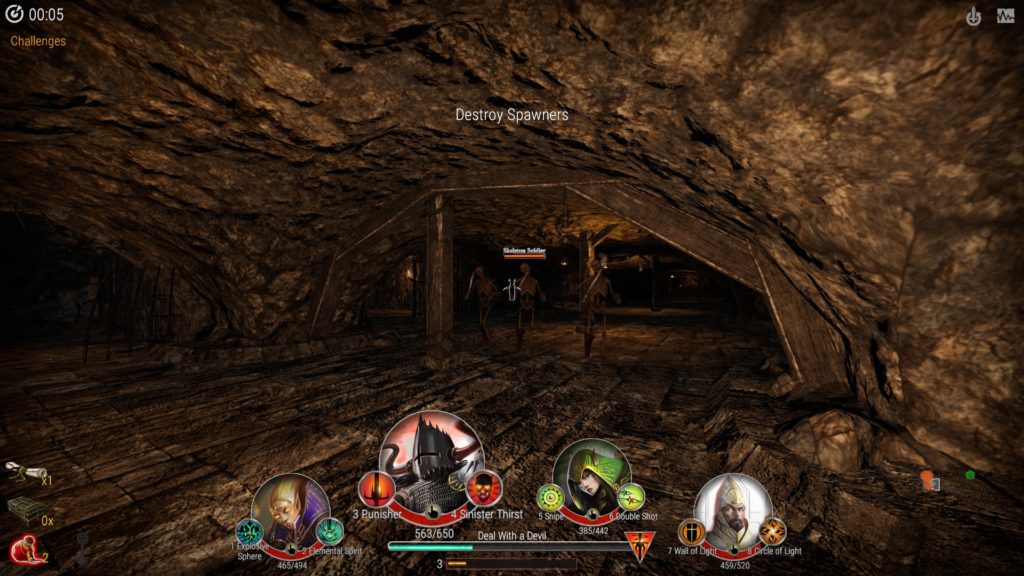

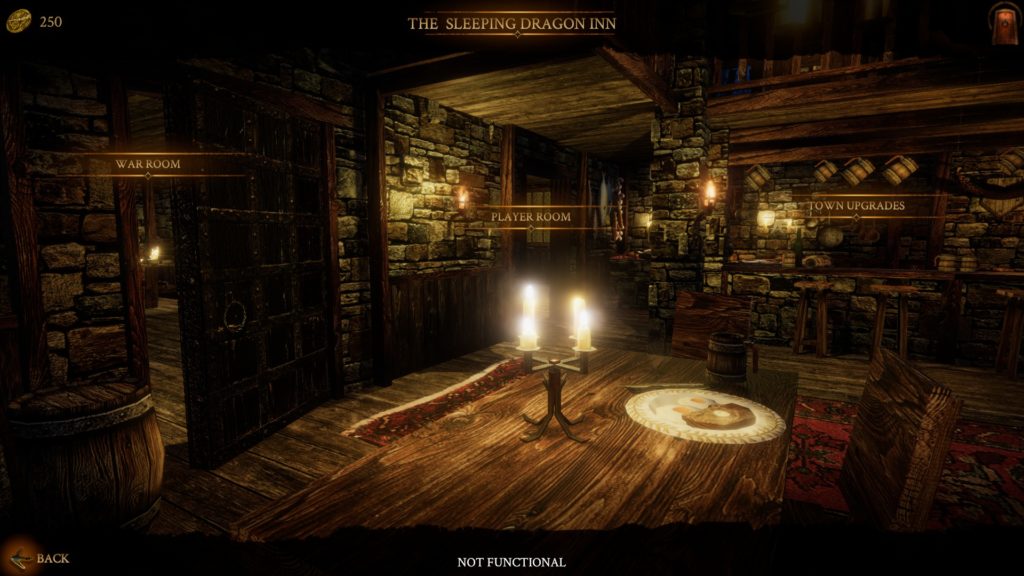
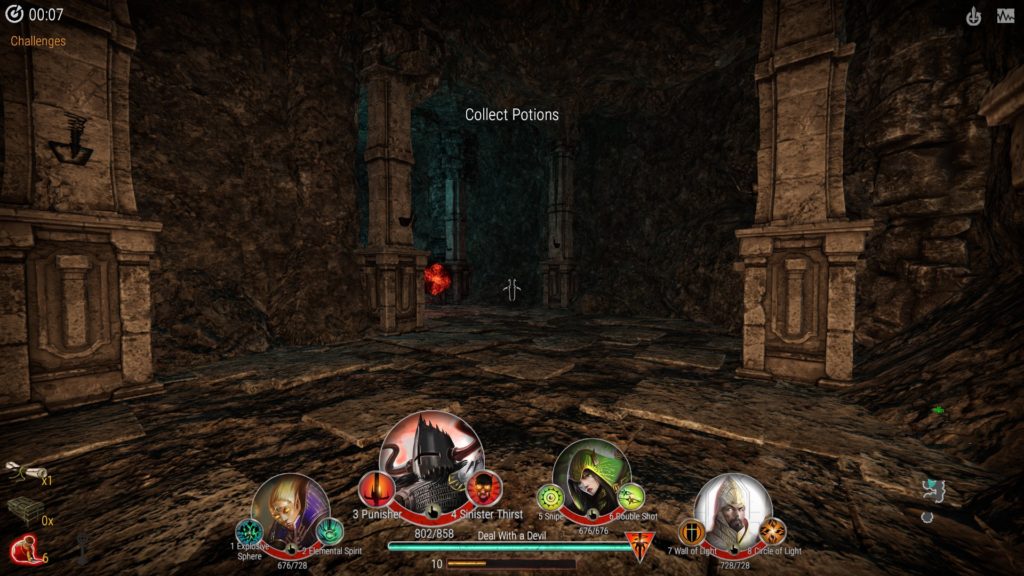
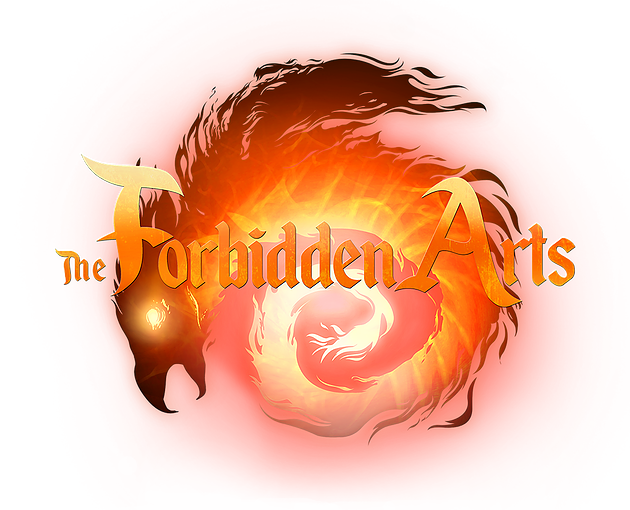
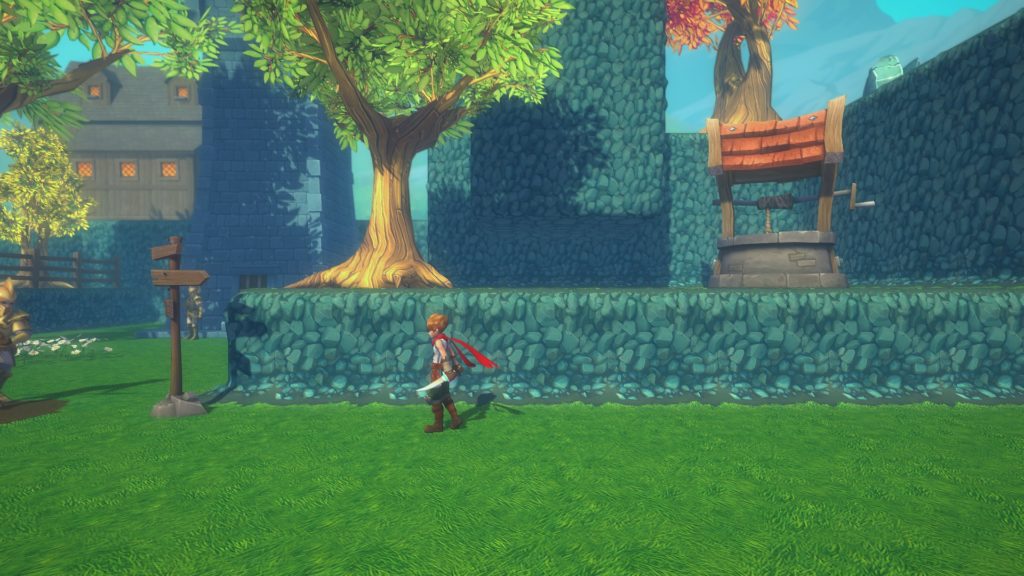
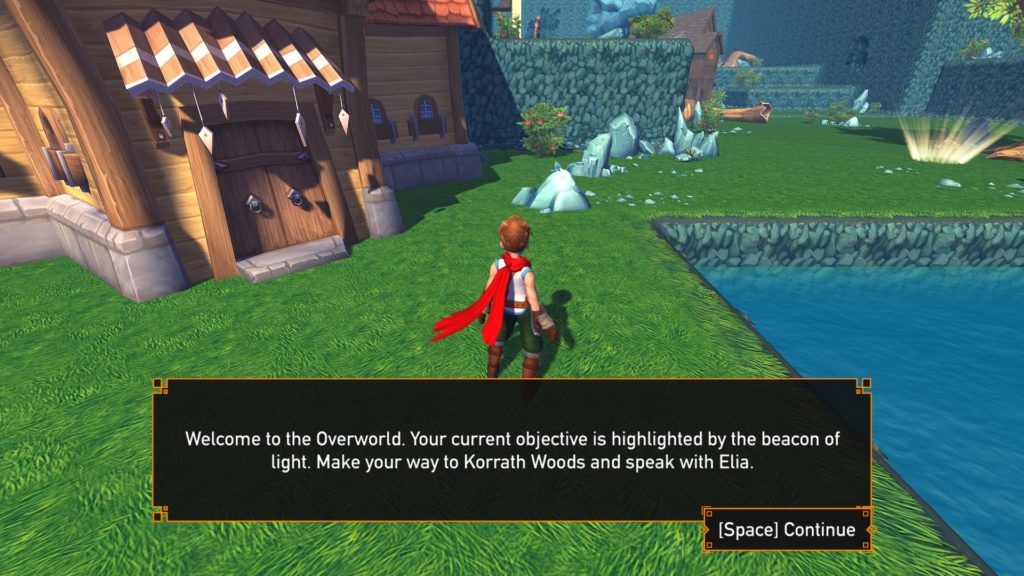
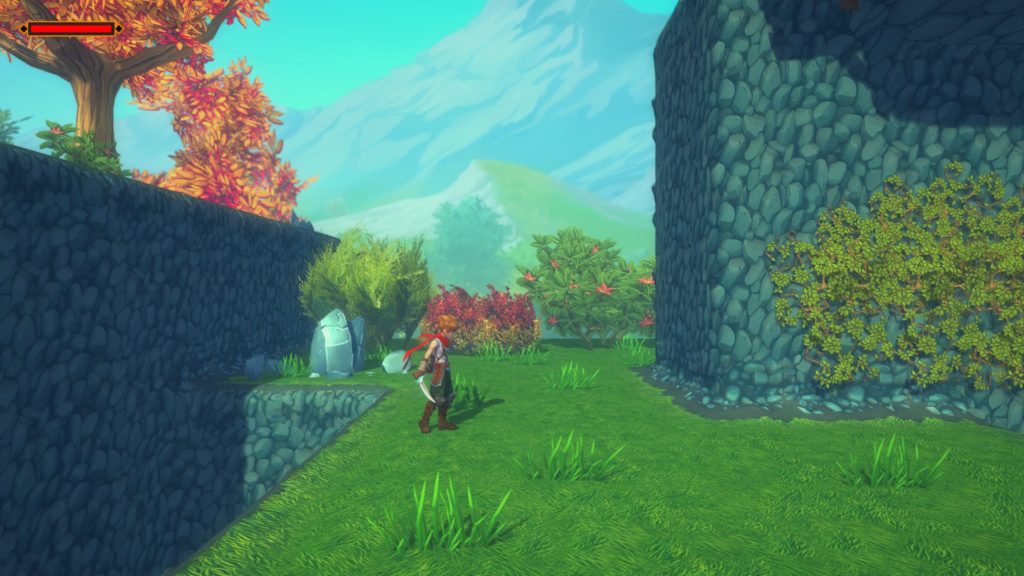
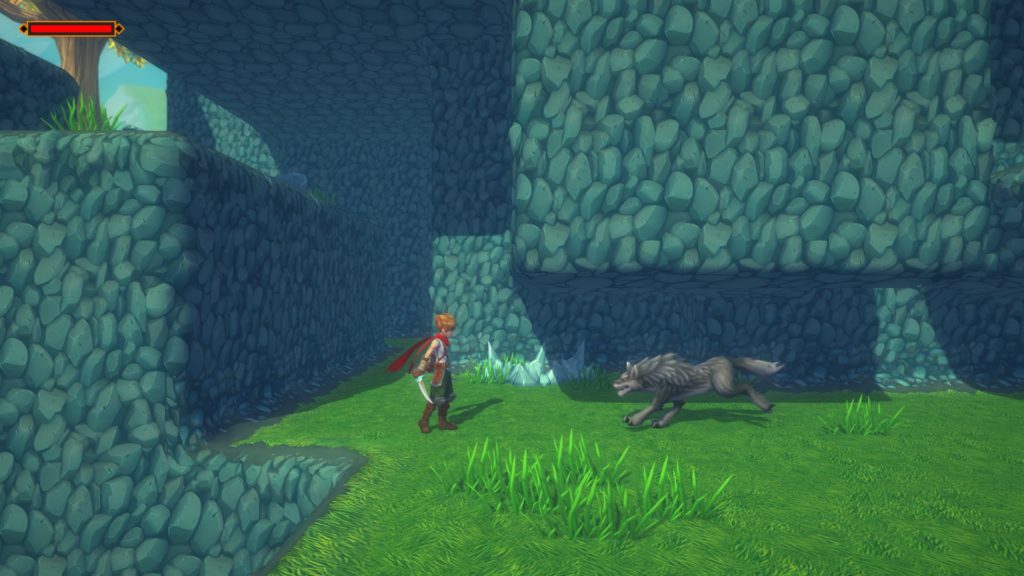

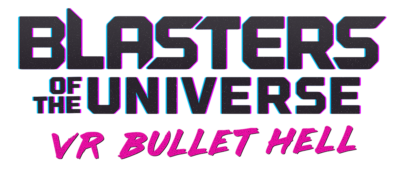 Developer/Publisher: Secret Location || Overall: 8.75 / 10
Developer/Publisher: Secret Location || Overall: 8.75 / 10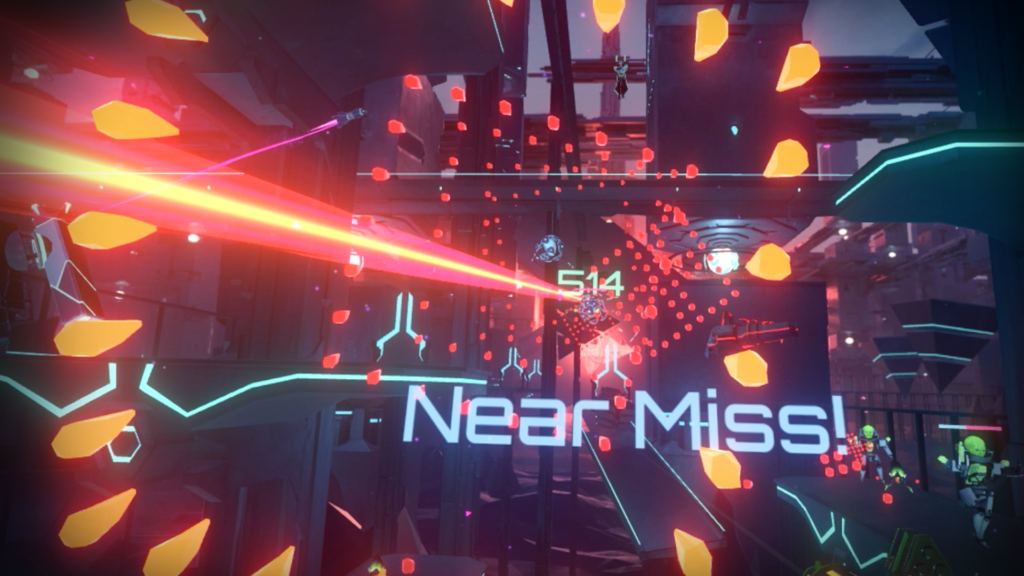

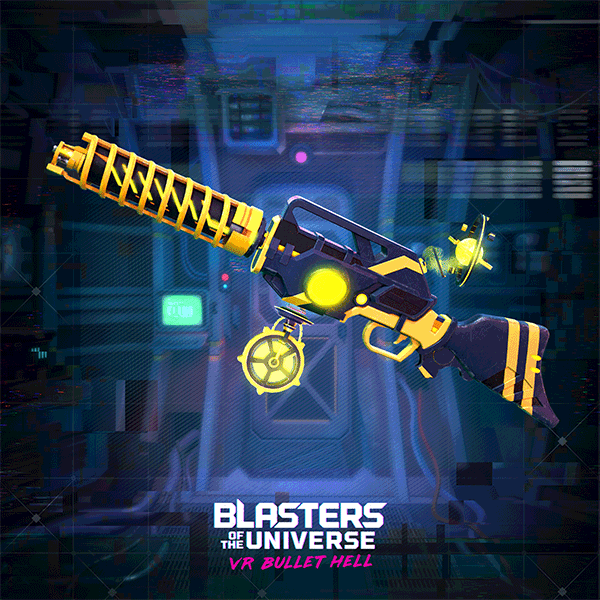
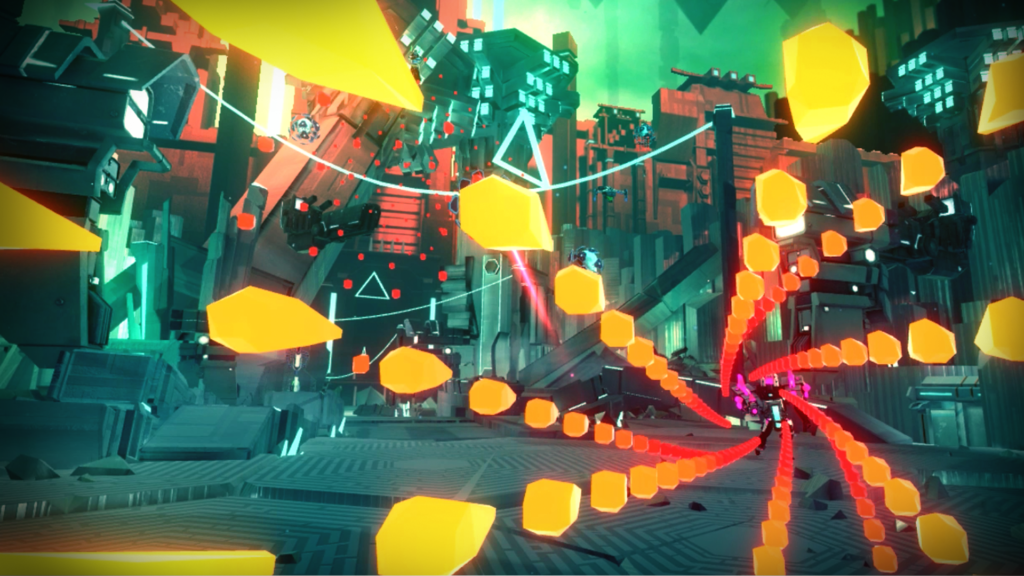















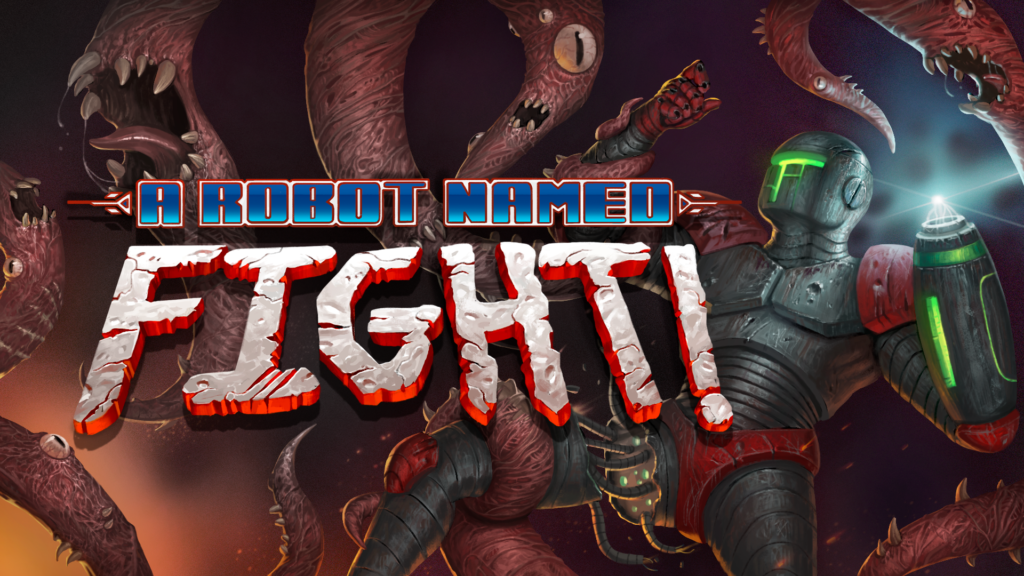
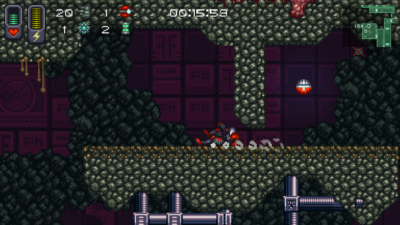
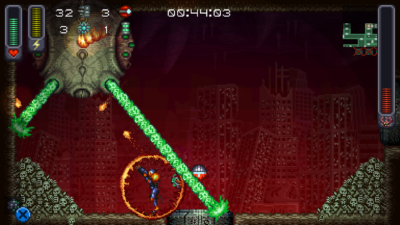



































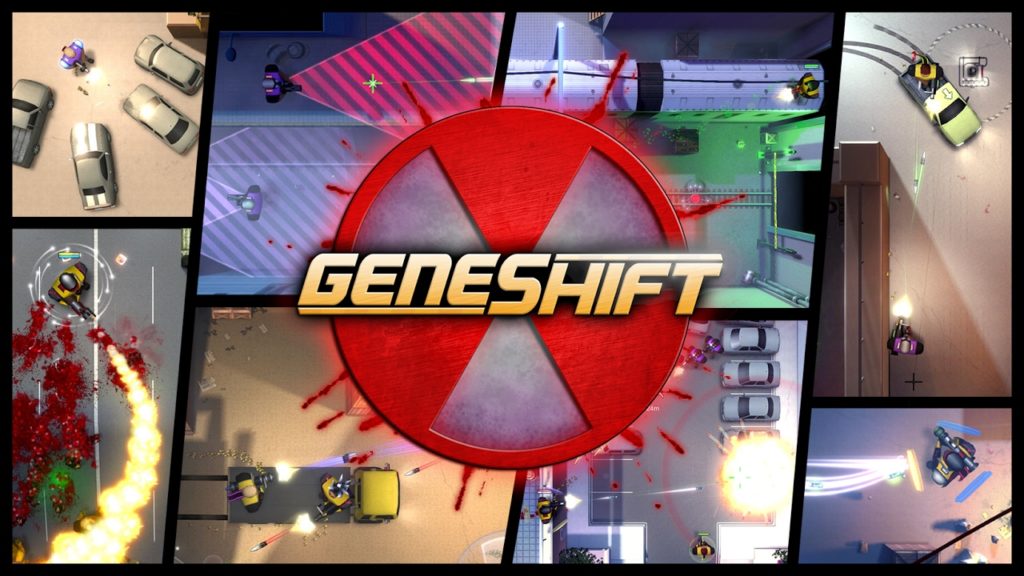
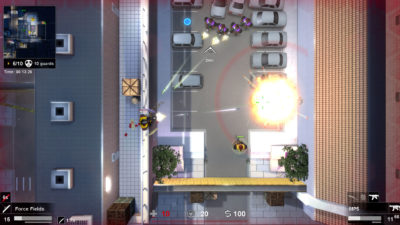 Geneshift is a top-down shooter, much like classic Grand Theft Auto games DMA Designs made before Nintendo got to them (yeah-I said it, bitch) and fucked the company into bankruptcy. You walk, you jump (surprisingly), you shoot. Occasionally you’ll use an ability, or drive a car. On the surface, it’s pretty simple. You’re a mercenary working for some lab, killing rebels or terrorists or something. Nothing particularly amazing, but it gets the job done. I don’t think it’s anything memorable, but it’s not the driving force behind this game.
Geneshift is a top-down shooter, much like classic Grand Theft Auto games DMA Designs made before Nintendo got to them (yeah-I said it, bitch) and fucked the company into bankruptcy. You walk, you jump (surprisingly), you shoot. Occasionally you’ll use an ability, or drive a car. On the surface, it’s pretty simple. You’re a mercenary working for some lab, killing rebels or terrorists or something. Nothing particularly amazing, but it gets the job done. I don’t think it’s anything memorable, but it’s not the driving force behind this game.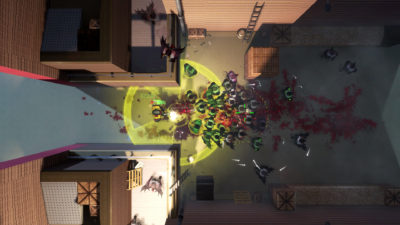 So, the grade versus the lack of description- what’s a game gotta do to get a “meh” around here? While Geneshift isn’t particularly out of this world, or a “must play” sort of game, it’s not really a bad one, or even one that’s just kind of okay. Simple, clean-looking games have their place. Soldat. Agar.io. LYNE. You could put Geneshift in that sort of group: simple games that are for casual consumption. There’s nothing sloppy about the controls or their implementation, and it can be rather fun at times, but it somehow it doesn’t offer enough to me. It’s got deathmatch, it’s got cooperative campaign options, it’s got a lot of the makings of something I would want to play often. For some reason, though, the perspective doesn’t do it for me like I felt it would when I initially started playing. Guns have variable engaging ranges, but they all end up averaging out once you factor in the perspective you play the game at. While it’s not inherently bad because of the perspective, the gameplay becomes somewhat tedious. Shooting enemies from below still takes cover into account, so sometimes you have to click on a very precise location to shoot someone that appears to be peeking by a ledge. Knowing what you can climb isn’t obvious without jumping up and down, which prompts ledges to highlight. Nothing’s particularly broken, but too often is there a moment where I get caught doing a jump and get stuck, or have to battle a level’s design because it requires perfect timing in jumps (no shit, by the way; I beat all of Cuphead on hard, but Geneshift is the only game in recent memory that managed to piss me off with a section of platforming).
So, the grade versus the lack of description- what’s a game gotta do to get a “meh” around here? While Geneshift isn’t particularly out of this world, or a “must play” sort of game, it’s not really a bad one, or even one that’s just kind of okay. Simple, clean-looking games have their place. Soldat. Agar.io. LYNE. You could put Geneshift in that sort of group: simple games that are for casual consumption. There’s nothing sloppy about the controls or their implementation, and it can be rather fun at times, but it somehow it doesn’t offer enough to me. It’s got deathmatch, it’s got cooperative campaign options, it’s got a lot of the makings of something I would want to play often. For some reason, though, the perspective doesn’t do it for me like I felt it would when I initially started playing. Guns have variable engaging ranges, but they all end up averaging out once you factor in the perspective you play the game at. While it’s not inherently bad because of the perspective, the gameplay becomes somewhat tedious. Shooting enemies from below still takes cover into account, so sometimes you have to click on a very precise location to shoot someone that appears to be peeking by a ledge. Knowing what you can climb isn’t obvious without jumping up and down, which prompts ledges to highlight. Nothing’s particularly broken, but too often is there a moment where I get caught doing a jump and get stuck, or have to battle a level’s design because it requires perfect timing in jumps (no shit, by the way; I beat all of Cuphead on hard, but Geneshift is the only game in recent memory that managed to piss me off with a section of platforming).

















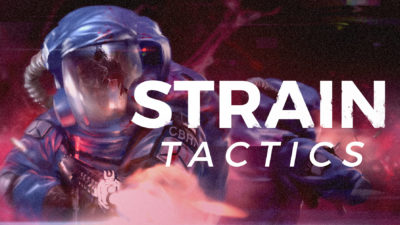
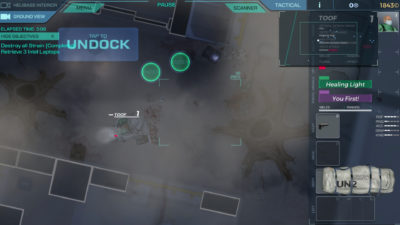 Alright, grab an XCOM. Any one of them will do, we’re just going for basic themes here. Dump that in. Now, scoop up some Alien Swarm (it’s free) and plop that in there, too. Now, and this is important, add a dab of tower defense. Just a bit. Trust me: it’ll make some sense. Hit “blend” and watch those mix up. Take the pitcher of your rather interesting mix of genres and pour that shit into a phone and you’ve got Strain Tactics from Touch Dimensions Interactive.
Alright, grab an XCOM. Any one of them will do, we’re just going for basic themes here. Dump that in. Now, scoop up some Alien Swarm (it’s free) and plop that in there, too. Now, and this is important, add a dab of tower defense. Just a bit. Trust me: it’ll make some sense. Hit “blend” and watch those mix up. Take the pitcher of your rather interesting mix of genres and pour that shit into a phone and you’ve got Strain Tactics from Touch Dimensions Interactive.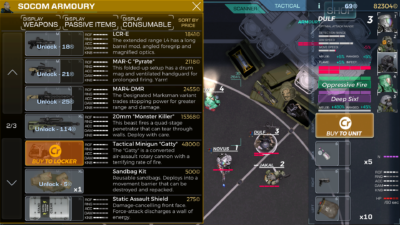 Despite most of the game revolving around directly positioning your squad members and marking targets to shoot (though they engage automatically if enemies are in range), the squad’s helicopter is fully controllable at all points of gameplay. The helicopter acts as a storage locker for gear, a transport for players and NPCs, and fire support against visible targets on the ground, which gives the player immense amounts of control about how they deploy, what their troops are armed with and what their exit point will be. Your team begins each mission aboard the heli, and they don’t disembark until you’ve decided to. It’s a refreshing amount of choice in a genre that routinely grants you limited power despite your role as a “commander” or whatever. When was the last time you had the option of landing your squad near your target in XCOM rather than running a fucking marathon from your drop zone? Oh, never? What about using your dropship to blast the shit out of dangerous enemy units before they become a threat to your squad’s objectives? What?! Never?! What a shame! It’s okay, though: Strain Tactics lets you do that. Using a minigun, a small cannon, or even some big ass firebombs, the helicopter can lay waste to outside targets. While it’s not always a viable option, what with interior locations and the occasional heavy foliage area, it’s a rather interactive way to support your squad in a way that makes a ton of sense. Why this hasn’t been done before in mainstream titles is baffling to me, but Strain Tactics delivers this sort of engaging gameplay dynamic in a tight little package. I’d dare to say that it’s something you could make a franchise off of.
Despite most of the game revolving around directly positioning your squad members and marking targets to shoot (though they engage automatically if enemies are in range), the squad’s helicopter is fully controllable at all points of gameplay. The helicopter acts as a storage locker for gear, a transport for players and NPCs, and fire support against visible targets on the ground, which gives the player immense amounts of control about how they deploy, what their troops are armed with and what their exit point will be. Your team begins each mission aboard the heli, and they don’t disembark until you’ve decided to. It’s a refreshing amount of choice in a genre that routinely grants you limited power despite your role as a “commander” or whatever. When was the last time you had the option of landing your squad near your target in XCOM rather than running a fucking marathon from your drop zone? Oh, never? What about using your dropship to blast the shit out of dangerous enemy units before they become a threat to your squad’s objectives? What?! Never?! What a shame! It’s okay, though: Strain Tactics lets you do that. Using a minigun, a small cannon, or even some big ass firebombs, the helicopter can lay waste to outside targets. While it’s not always a viable option, what with interior locations and the occasional heavy foliage area, it’s a rather interactive way to support your squad in a way that makes a ton of sense. Why this hasn’t been done before in mainstream titles is baffling to me, but Strain Tactics delivers this sort of engaging gameplay dynamic in a tight little package. I’d dare to say that it’s something you could make a franchise off of.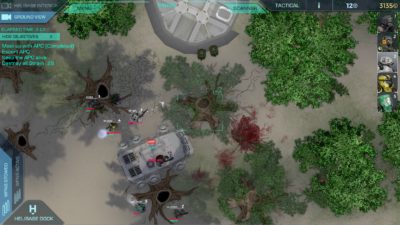 However, the honeymoon isn’t long. The game has problems, one so heinously rooted that I’m not entirely sure it can be easily fixed with patches: it’s a phone game.
However, the honeymoon isn’t long. The game has problems, one so heinously rooted that I’m not entirely sure it can be easily fixed with patches: it’s a phone game.















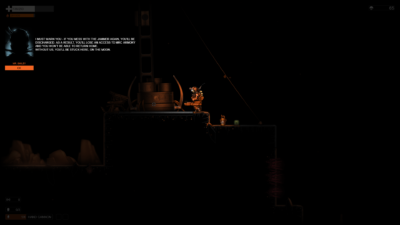 Oooh-eee! Sounds like a good time, huh? Some platforming, some complex puzzles… will I uncover all of Orange Moon’s secrets?
Oooh-eee! Sounds like a good time, huh? Some platforming, some complex puzzles… will I uncover all of Orange Moon’s secrets?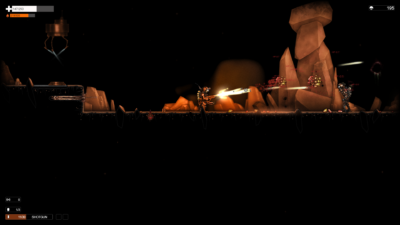 Fuel is tied to jumping, which means if you’re out or low you’ll spend a rather long amount of time waiting until you can climb out of a hole or make it through a jumping section, especially if you’re using the flamethrower a lot. This can be offset with upgrades, but the design isn’t really fun, it doesn’t add challenge, and it’s not interesting. Eventually, when upgraded, fuel is trivial and no longer serves a purpose, especially as the flamethrower becomes increasingly less useful. It just never seems to fit in with the rest of the game in a meaningful way that limits the player or forces choices outside of, “Do I want to wait a few minutes before I can climb out of this hole?”
Fuel is tied to jumping, which means if you’re out or low you’ll spend a rather long amount of time waiting until you can climb out of a hole or make it through a jumping section, especially if you’re using the flamethrower a lot. This can be offset with upgrades, but the design isn’t really fun, it doesn’t add challenge, and it’s not interesting. Eventually, when upgraded, fuel is trivial and no longer serves a purpose, especially as the flamethrower becomes increasingly less useful. It just never seems to fit in with the rest of the game in a meaningful way that limits the player or forces choices outside of, “Do I want to wait a few minutes before I can climb out of this hole?”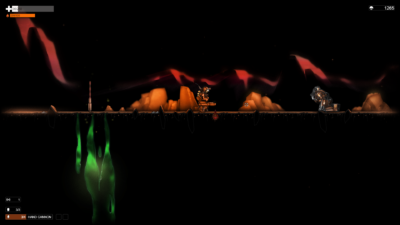 I think Orange Moon‘s most common problem is poor design. Enemies are not particularly difficult to deal with, often blocking a corridor perfectly with their height, acting almost as an aggressive door that needs to be unlocked with a shit load of ammo. Outside of the crappy turrets and plants all over the place, enemies tend to have a lot of hit points and armor that renders many guns useless without a lot of upgrades. All story is conveyed via text in the upper left corner of the screen, but when these kinds of events happen the entire screen darkens, aside from a small circle around your character, even if you’re in the middle of combat. Why do this? To force me to read this uninspiring story? Don’t interrupt the gameplay like that, man. That’s like the missus asking, “Are you done yet?” in the middle of “doin’ it”–it doesn’t really inspire enthusiasm, and it’s an extra unnecessary hurdle in trying to have some fuckin’ fun. Pile those two on top of my other complaints, and you don’t really have much of a reason to hang out in Orange Moon‘s world. Other games that are somewhat similar, even classics like Super Metroid accomplish the same thing without all the egregious errors.
I think Orange Moon‘s most common problem is poor design. Enemies are not particularly difficult to deal with, often blocking a corridor perfectly with their height, acting almost as an aggressive door that needs to be unlocked with a shit load of ammo. Outside of the crappy turrets and plants all over the place, enemies tend to have a lot of hit points and armor that renders many guns useless without a lot of upgrades. All story is conveyed via text in the upper left corner of the screen, but when these kinds of events happen the entire screen darkens, aside from a small circle around your character, even if you’re in the middle of combat. Why do this? To force me to read this uninspiring story? Don’t interrupt the gameplay like that, man. That’s like the missus asking, “Are you done yet?” in the middle of “doin’ it”–it doesn’t really inspire enthusiasm, and it’s an extra unnecessary hurdle in trying to have some fuckin’ fun. Pile those two on top of my other complaints, and you don’t really have much of a reason to hang out in Orange Moon‘s world. Other games that are somewhat similar, even classics like Super Metroid accomplish the same thing without all the egregious errors.